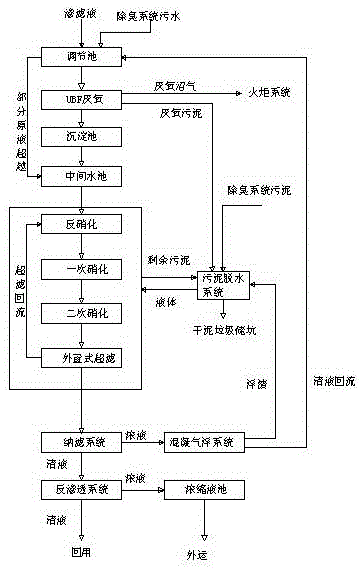SNCR denitration deodorizing method
A denitrification and denitrification technology, applied in the field of SNCR denitrification and deodorization, can solve the problems of low efficiency, high cost, affecting the reduction reaction temperature, etc., and achieve the effect of reducing costs
- Summary
- Abstract
- Description
- Claims
- Application Information
AI Technical Summary
Problems solved by technology
Method used
Image
Examples
Embodiment Construction
[0016] The preferred embodiments of the present invention will be described in detail below in conjunction with the accompanying drawings, so that the advantages and features of the present invention can be more easily understood by those skilled in the art, so as to define the protection scope of the present invention more clearly.
[0017] see figure 1 A kind of SNCR denitrification deodorization method shown, comprises the following steps:
[0018] 1) Input the sewage and leachate produced in the garbage deodorization process into the regulating tank, and then pour it into the sedimentation tank after being regulated by the regulating pond. Before instilling, the sludge and biogas in the sewage are separated through the UBF anaerobic system. The final sludge enters the sludge dewatering system, and the separated biogas is incinerated and volatilized by the torch system. After settling in the sedimentation tank, the clarified sewage is pumped to the intermediate tank for sec...
PUM
 Login to View More
Login to View More Abstract
Description
Claims
Application Information
 Login to View More
Login to View More - R&D
- Intellectual Property
- Life Sciences
- Materials
- Tech Scout
- Unparalleled Data Quality
- Higher Quality Content
- 60% Fewer Hallucinations
Browse by: Latest US Patents, China's latest patents, Technical Efficacy Thesaurus, Application Domain, Technology Topic, Popular Technical Reports.
© 2025 PatSnap. All rights reserved.Legal|Privacy policy|Modern Slavery Act Transparency Statement|Sitemap|About US| Contact US: help@patsnap.com

